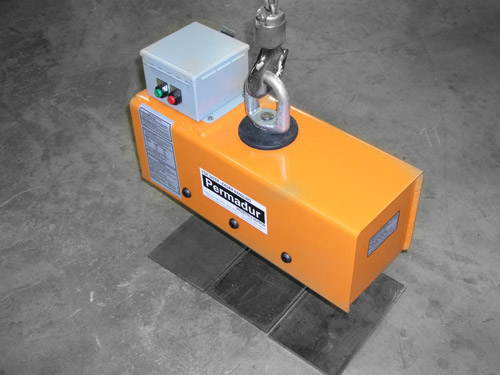Regular and preventive maintenance is pivotal to the longevity of any industrial equipment, and this principle applies wholeheartedly to permanent lifting magnets. This is especially crucial for heavily utilized systems, as they endure more wear and tear compared to infrequently used ones.
The Importance of Regular Maintenance Checks
The standard recommendation for a heavily-used permanent lifting magnet is to perform a monthly maintenance check. This schedule is essential due to the increased friction, potential stress cracks, and overall wear on the lifting surface, all of which can degrade the magnet's lifting capacity over time.
Key Maintenance Checks for Heavy-Use Lifting Magnets
Inspection of the magnetic surface: Look for any signs of chipping, cracking, or deformations. These anomalies could affect the magnet's ability to establish a secure connection with the load.
- Checking the lever: The lever of a permanent lifting magnet needs to move freely without sticking. Any impediment could cause difficulties in either engaging or disengaging the magnet.
- Reviewing the load: Regularly review the types of materials and weights you're lifting. If they're exceeding the rated capacity of the magnet, it's time for an upgrade.
- Performing a lift test: Regularly test the magnet's lifting capacity using weights close to its maximum rated capacity to ensure it's performing optimally.
Maintenance for Less Frequently Used Magnets
In contrast, a permanent lifting magnet used less frequently may only require a quarterly or semi-annual maintenance check. The protocols remain similar, but the frequency is reduced, reflecting the lower operational stress level. Despite the less frequent use, it's important not to overlook regular inspections to identify potential issues that may not be readily visible.
The Impact of Regular Maintenance
Regular maintenance on your permanent lifting magnets will extend their service life and uphold the safety standards within your operations. Moreover, this routine check can help spot minor issues before they escalate into costly repairs or cause unscheduled downtime.
When to Consult Professional Repair Services
Remember that any signs of severe damage or performance degradation should prompt an immediate consultation with a professional repair service. The main rule is that safety should never be compromised, regardless of the frequency of magnet usage. Regular maintenance checks are integral to the safe and prolonged operation of your permanent lifting magnet.
The Role of Training in Maintenance
Effective maintenance is about more than just the physical aspects of the lifting magnet. It's also about ensuring the operators understand how to use and look after the equipment correctly.
Ensuring Proper Operator Training
- Understanding the equipment: Ensure that operators understand the functionality and limitations of the lifting magnet. They should know its rated capacity and the materials it can lift.
- Recognizing signs of wear and tear: Train operators to recognize signs of damage or excessive wear. This proactive approach can prevent accidents and reduce downtime due to unexpected equipment failures.
- Safe operating practices: Regularly reinforce safety guidelines and best practices. Doing this reduces the risk of accidents during operations.
The Value of Quality Replacement Parts
Using high-quality replacement parts during maintenance checks is critical for the longevity and performance of your lifting magnets.
Choosing the Right Replacement Parts
- Compatibility: Ensure that replacement parts are compatible with your specific model of lifting magnet. Using incompatible parts can lead to performance issues and may even damage the equipment.
- Quality: High-quality parts may have a higher upfront cost, but they often last longer and perform better, providing better value in the long run.
- Reputable suppliers: Always source your replacement parts from reputable suppliers. This ensures that the parts meet industry standards and are unlikely to fail prematurely.
Proper and regular maintenance of your permanent lifting magnets is an investment in the longevity of your equipment, the efficiency of your operations, and, importantly, the safety of your operators. By following these guidelines and prioritizing maintenance, you can ensure your lifting magnets continue to perform optimally, supporting your operations and productivity over the long term.


